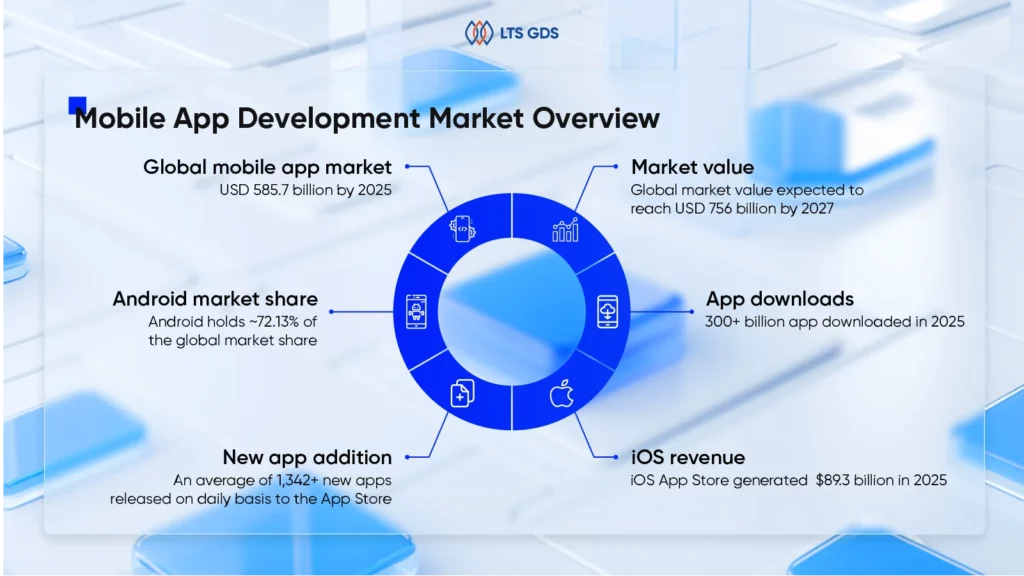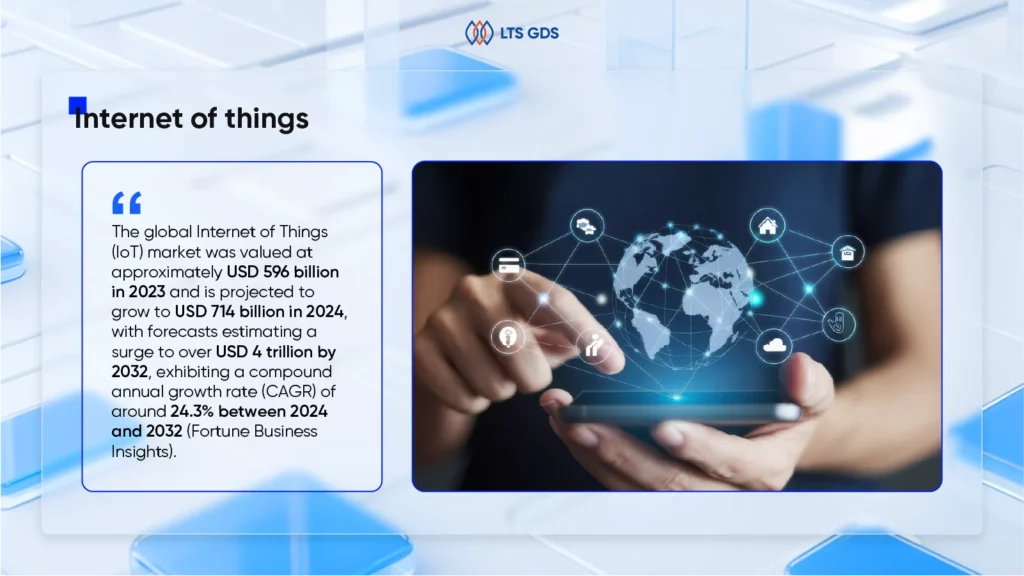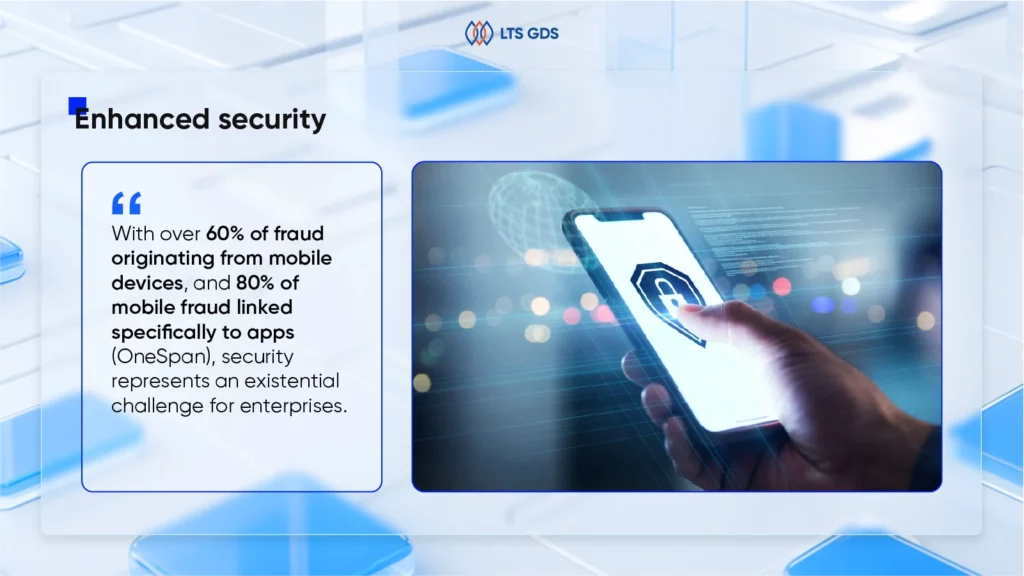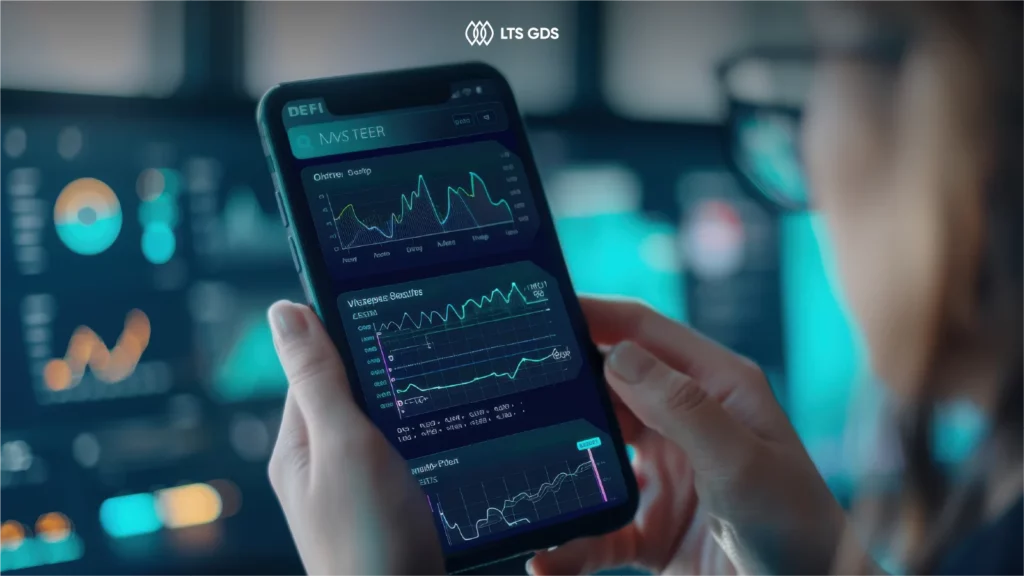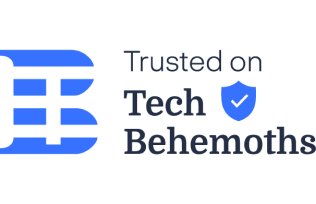Mobile App Development Trends By Industry in 2025
Aug 15, 2025
-24 mins read
Share

More must-reads to keep leaders updated

ADAS: A Complete Guide to Advanced Driver Assistance Systems
Oct 29, 2025
-33 mins read
Among the technologies shaping the future of mobility, the Advanced Driver-Assistance System (ADAS) stands as a cornerstone for achieving fully autonomous driving. As vehicles evolve into intelligent, connected platforms, ADAS is redefining what safety, comfort, and performance mean on the road. Driven by breakthroughs in AI, sensor fusion, and V2X (Vehicle-to-Everything) connectivity, ADAS systems enable vehicles to sense, interpret, and act on complex driving environments in real time. Features such as adaptive cruise control, automatic emergency braking, and lane keeping assist are now integral to modern vehicle design, reflecting the industry’s shift toward software-defined intelligence. Behind these innovations lies a sophisticated software ecosystem demanding precision, scalability, and compliance with strict safety standards like ISO 26262. With deep expertise in automotive software development and testing based on the V-Model, LTS Group provides tailored engineering solutions that empower global OEMs and Tier 1 suppliers to accelerate ADAS development efficiently and reliably. In this article, we uncover the foundations and technologies behind ADAS, and explore how advanced software engineering is paving the way toward a safer, smarter, and fully autonomous future. Table of Contents Toggle What is ADAS?Overview and functionalityDevelopment historyApplication areas of ADASMarket size and future outlookLTS Group Automotive Software Development and Test Solutions (V-Model Compliant)Software requirements analysis Software architecture designSoftware detailed design and unit implementationSoftware unit testingSoftware integration testingSoftware conformance testingLTS Group’s Automotive Software Development and Testing Case StudyDeveloping driving safety and energy management solutions for a Chinese tier-1 supplierWhy Choose LTS Group’s Automotive Software Engineers1. Internationally compliant development and quality management system2. Over 8 years of specialized experience in automotive software development3. Proven track record: 250+ projects, 15,000+ man-months of experience4. Agile, scalable organization with rapid decision-makingFrequently Asked Questions About ADASConclusion What is ADAS? Advanced Driver-Assistance Systems (ADAS) refer to vehicle-based intelligent safety technologies designed to enhance road safety, improve driving comfort, and support the transition toward autonomous mobility. By leveraging advanced sensors, control algorithms, and embedded software, ADAS helps prevent accidents, reduce their severity, and facilitate more efficient post-accident response. Overview and functionality At its core, ADAS is a software-driven ecosystem that enables vehicles to perceive, interpret, and respond to their surroundings in real time. Using a combination of cameras, radar, LiDAR, ultrasonic sensors, and sensor fusion algorithms, these systems identify road signs, pedestrians, nearby vehicles, and lane markings with high precision. The collected data is processed through real-time decision-making algorithms that either alert the driver or automatically take corrective action. Common examples include: Forward Collision Warning (FCW) and Automatic Emergency Braking (AEB) to prevent frontal impacts. Lane Departure Warning (LDW) and Lane Keeping Assist (LKA) to maintain lane discipline. Adaptive Cruise Control (ACC) to automatically adjust speed and maintain a safe following distance. Blind Spot Detection (BSD) to monitor adjacent lanes. Automated Parking Assist (PA) to support precise, hands-free maneuvering. Together, these systems contribute to an integrated safety environment, combining human intuition with machine intelligence to reduce driver workload and enhance situational awareness. Development history The origins of ADAS trace back to the early 1990s in Japan, where automakers such as Toyota and Mitsubishi pioneered radar-based Adaptive Cruise Control (ACC) systems. This innovation automatically adjusted vehicle speed to maintain safe distances, marking one of the first practical steps toward intelligent driving assistance. During the same period, European and American manufacturers were still limited to conventional cruise control. It was not until the mid-2000s that advanced systems such as ACC, Blind Spot Detection (BSD), and Park Assist (PA) began to appear in high-end models from Mercedes-Benz, BMW, and Lexus. The terminology “Advanced Driver-Assistance Systems (ADAS)” gained official recognition in 2014, when global regulators, research institutions, and OEMs began standardizing definitions and safety requirements across the automotive sector. This milestone reflected a growing consensus: intelligent software, not just mechanical precision, would define the next era of automotive safety. Year Milestone Description 1958 First constant-speed control Chrysler introduces the first cruise control system in the U.S. 1992 Japan’s radar-based ACC experiments Toyota and Mitsubishi begin adaptive speed control testing. 1995 Intelligent highway system (IVHS) Europe and the U.S. expand smart vehicle R&D initiatives. 2003-2006 Commercialization of ADAS features ACC, BSD, and PA systems enter luxury models. 2010s Emergence of sensor fusion Camera-radar integration evolves into AI-based decision making. 2014 Global standardization of “ADAS” Official adoption of the term by industry and academia. 2020s Widespread adoption and Level 2 autonomy Systems like Tesla Autopilot and Hyundai SmartSense popularize assisted driving. Application areas of ADAS Originally designed for passenger cars, ADAS technologies are now widely adopted across commercial, industrial, and agricultural vehicles, each with tailored use cases: Public transport: Buses and trams equipped with AEB, LKA, and FCW help reduce urban accidents and improve pedestrian safety. Heavy-duty trucks: Blind Spot Detection (BSD) and Adaptive Cruise Control (ACC) enhance long-distance safety and efficiency, especially on highways. The EU’s 2024 regulation mandating ADAS in new commercial vehicles underscores its growing importance. Construction and off-road machinery: Systems like work radius detection, automatic stop, and slope assistance protect workers and improve operational efficiency in demanding environments. Agricultural machinery: GPS- and LiDAR-based driving assistance enables automated tractors, autonomous harvesters, and drone-integrated crop monitoring, forming the backbone of precision agriculture. This diversification highlights the scalability of ADAS, from consumer vehicles to specialized equipment, powered by adaptable software architectures and domain-specific algorithms. Market size and future outlook According to Statista, the global ADAS market reached approximately USD 58 billion in 2024 and is expected to surpass USD 125 billion by 2029, reflecting a strong CAGR driven by rising safety regulations and demand for automation. In the Asia-Pacific region, growth is projected to outpace all other markets between 2025 and 2030, led by expanding vehicle production, infrastructure development, and strong OEM presence in China, India, and Japan (Grand View Research). China currently holds the largest market share, driven by rapid smart mobility initiatives. India is forecasted to achieve the fastest CAGR, emerging as a key innovation and manufacturing hub. Leading ADAS solution providers, such as Bosch, DENSO, Valeo, Continental, and Mobileye, continue to invest in AI-driven perception, sensor integration, and software modularization to meet growing regulatory and performance expectations. The market’s trajectory indicates a clear trend: as vehicles become software-defined, ADAS will no longer be an optional feature but a fundamental system layer. The convergence of sensor technology, data analytics, and embedded software engineering is shaping the foundation for higher levels of automation and safer, more connected mobility ecosystems. LTS Group Automotive Software Development and Test Solutions (V-Model Compliant) LTS Group adopts a systematic and safety-oriented software development and verification process based on the internationally recognized V-Model, designed to meet the automotive industry’s most rigorous functional and safety requirements. The V-Model establishes a one-to-one correspondence between development and testing activities, ensuring every function is validated against its intended specification, ranging from initial requirement analysis to final system qualification. By aligning each phase of the software lifecycle with its verification counterpart, LTS Group secures predictable, measurable, and high-assurance quality outcomes, minimizing downstream risks and optimizing time-to-market. This section outlines the step-by-step execution framework that LTS Group applies in real-world customer projects, showcasing how our V-Model–compliant development process enables the creation of robust, standards-compliant automotive systems such as ADAS, ECUs, and domain controllers. Software requirements analysis In the Software Requirements Analysis (SRA) phase, LTS Group performs a comprehensive examination of the system and software specifications provided by OEMs. Our engineers meticulously extract, structure, and refine these requirements to establish a clear and verifiable foundation for all subsequent development stages. This phase is essential to ensuring that each functional feature is implemented accurately and aligned with the intended vehicle system behavior. Our systematic approach includes: Requirement extraction & structuring Thoroughly analyze system and software specifications provided by OEMs. Abstract and formalize requirements into a structured Software Requirements Specification (SRS) document. Establish a solid basis for accurate, error-free feature implementation in subsequent stages. Requirement classification & refinement Categorize requirements by level, function, and data interaction. Perform linguistic and logical refinement to eliminate ambiguity or overlap. Ensure consistency and clarity across all stakeholders, minimizing misinterpretation. Stakeholder collaboration & validation Maintain continuous, two-way communication with OEMs and suppliers. Clarify scope, constraints, and assumptions through consultative discussions. Proactively identify and mitigate potential project or compliance risks. Traceability & change management Apply ASPICE-compliant bidirectional traceability to link requirements with implementation and verification activities. Utilize IBM DOORS, an industry-standard tool, for transparent requirements management. Control modifications through version tracking, baseline management, and change review processes. These methodologies have been successfully applied in our large-scale automotive programs, including ESP/ESC/IBS systems and BMW Battery Management Systems (BMS) – demonstrating LTS Group’s reliability and technical competence as a software development partner in the highly regulated automotive domain. Software architecture design The Software Architecture Design phase transforms system requirements into a structured, technically feasible software framework. This stage is fundamental to ensuring that each automotive software system, particularly those supporting ADAS, chassis control, or battery management, achieves high performance, reliability, and scalability across its lifecycle. Our process combines methodological rigor with hands-on engineering expertise, following ASPICE-aligned practices and ISO 26262 functional safety standards. Key execution areas System decomposition and modular design Decompose the complete system into independent, function-specific modules with clearly defined responsibilities and boundaries. Map data and signal flows between modules to maintain consistency, timing precision, and interoperability. Define standardized interfaces and APIs to enable seamless integration between hardware and software components, including ECUs and domain controllers. Architecture modeling and tool-based validation Utilize IBM Rhapsody and Vector DaVinci for model-driven architecture design, simulation, and validation. Align the software structure with the hardware topology, ensuring parallel development and streamlined debugging. Maintain full traceability from requirements to architectural elements, ensuring compliance with ASPICE process maturity. Integration for ADAS and safety-critical applications Architect integrated systems combining 77GHz radar, cameras, LiDAR sensors, and domain controllers to support real-time data fusion and perception. Optimize for real-time response, bandwidth efficiency, and fault-tolerant design – core prerequisites for safety-critical automotive systems. Design architectures that ensure deterministic behavior and redundancy in line with ISO 26262 requirements. Layered architecture approach Structure the system into application, service, and communication layers to maximize reusability and maintainability. Facilitate modular updates and future scalability, supporting evolving E/E architectures and emerging connectivity standards. Proven applications LTS Group’s architecture design capabilities have been successfully implemented in a range of complex, real-world automotive projects, including: Daimler Loop Controller Domain Controller for ADAS (77GHz Radar, Camera, and LiDAR Integration) ESP/ESC/IBS Smart Chassis Controller Airbag Control Unit Battery Management System (BMS) PEPS (Passive Entry Passive Start) System Software detailed design and unit implementation This stage focuses on translating each architectural element into detailed designs, configurations, and implemented modules that adhere to AUTOSAR standards, functional safety, and cybersecurity requirements. Our engineers employ model-based design, automated configuration, and systematic validation to ensure that every software unit integrates seamlessly into the overall system architecture. Key execution areas Detailed module design and specification Develop precise design specifications for each functional module, based on the previously defined system and software architecture. Use IBM Rhapsody to model control logic, data structures, and state machines, ensuring clear traceability to system requirements. Define module-level interfaces and data exchange mechanisms to maintain consistency across communication layers and ECUs. AUTOSAR-based development and configuration Utilize Vector DaVinci Developer and DaVinci Configurator Pro to design and integrate Basic Software (BSW) components within the AUTOSAR environment. Configure the Microcontroller Abstraction Layer (MCAL) via EB Tresos, enabling stable hardware–software interaction and precise peripheral control. Implement and configure standard automotive services and protocols, including OS, UDS, UDSonCAN, NVM, E2E, NM, XCP, CDD, RTE, and DEM – each aligned with timing and communication constraints defined in earlier design phases. Custom bootloader and cybersecurity implementation Design and implement OEM-specific bootloaders that comply with cybersecurity and secure boot requirements, ensuring software authenticity and integrity. Enable secure over-the-air (OTA) updates and in-field reprogramming to support long-term system maintainability. Functional safety integration and validation Integrate functional safety mechanisms at the unit level to meet ISO 26262 compliance targets. Apply defensive programming and diagnostic monitoring strategies to prevent cascading system faults and ensure safe degradation behavior. Conduct static code analysis, unit testing, and coverage validation to verify each unit’s logical correctness and adherence to design intent. Tools utilized LTS Group leverages a comprehensive suite of industry-standard tools to ensure precision, consistency, and full compliance throughout the detailed design and implementation phase: IBM Rhapsody – Model-based design and requirement traceability Vector DaVinci Developer & Configurator Pro – AUTOSAR BSW design, configuration, and validation EB Tresos – MCAL configuration and hardware abstraction management GENy – Configuration of Classic AUTOSAR modules and service layer components Proven deliverables Through this systematic, tool-driven approach, LTS Group warrants that every software unit is: Functionally aligned with system-level requirements Configured for seamless hardware integration Verified for both safety and cybersecurity compliance Ready for downstream testing and system integration under the ASPICE V-Model framework Software unit testing In the Software unit testing phase, each software module is rigorously verified to ensure that it performs its intended functions accurately, consistently, and safely. This phase serves as a critical quality gate in the automotive software development lifecycle, allowing defects to be detected and corrected at the earliest possible stage – before system integration, to significantly enhance overall reliability and reduce rework costs. Key objectives and approach Early error detection and verification Validate each software unit’s functional behavior, logical flow, and safety mechanisms in isolation. Ensure each unit meets the defined software requirements and design specifications established in earlier phases. Identify potential issues such as data handling errors, timing conflicts, or control logic flaws before integration. Dynamic testing (SIL / MIL-based verification) Conduct Software-in-the-Loop (SIL) and Model-in-the-Loop (MIL) simulations to replicate the runtime environment and validate module-level functionality under realistic conditions. Utilize specialized tools, including TPT, Tessy, and VectorCAST for: Automated test case generation Batch execution and regression testing Real-time result analysis Coverage measurement across MCDC (Modified Condition/Decision Coverage), Branch, and Decision criteria that complies with functional safety requirements under ISO 26262. Static analysis for code quality assurance Perform static code analysis in parallel using Polyspace and QAC to identify potential vulnerabilities before execution. Detect and correct critical issues such as: Uninitialized or unused variables Pointer misuse and memory access violations Logic inconsistencies and control flow anomalies MISRA C compliance violations and deviations from industry-accepted safety coding standards Traceability and compliance Maintain bidirectional traceability between test cases, requirements, and design elements through automated tool integration. Document and review all unit test outcomes as part of ASPICE process compliance and ISO 26262 evidence generation. Tools utilized Dynamic testing tools: TPT, Tessy, VectorCAST SIL (Software-in-the-Loop), MIL (Model-in-the-Loop) Static testing tools: Polyspace, QAC Proven application These unit-level verification activities have been successfully applied in projects involving ECUs, domain controllers, airbag controllers, and ADAS systems, ensuring predictable reliability, safety integrity, and production readiness across all software components. Software integration testing The software integration testing phase validates the correct interaction and communication between software modules that have successfully passed unit testing. This stage serves as a crucial checkpoint to guarantee that individually verified modules, when integrated, operate cohesively and reliably within the complete software environment. The ultimate goal is to confirm functional correctness, interface integrity, and system stability before system-level validation. Key objectives and approach Ensuring seamless module interaction Verify that modules exchange data, signals, and control commands as defined in the software architecture design. Detect and resolve integration defects such as interface mismatches, data corruption, or timing inconsistencies early in the testing pipeline. Confirm that inter-module communication meets real-time performance and safety constraints required for automotive applications. Interface testing Utilize tools such as Lauterbach and Tessy to validate the correctness of interface definitions and data exchanges between modules. Focus on interface boundary verification to ensure accurate communication between application software (ASW) and basic software (BSW) layers, as well as between middleware and hardware abstraction layers. Apply this especially to ECUs, ADAS domain controllers, and airbag control systems, where microsecond-level synchronization and deterministic responses are critical. Back-to-back testing Conduct Back-to-Back (B2B) Testing using tools like Tessy and TPT, comparing outputs between two environments, such as model simulation and target hardware, for the same input stimuli. Detect any logical discrepancies or behavioral deviations caused by integration issues, ensuring that the software performs consistently across development and production environments. Validate that compiled binaries accurately represent the modeled logic, eliminating inconsistencies that could compromise safety or performance. Traceability and compliance Maintain complete traceability between test cases, integration scenarios, and corresponding software requirements. Record and manage all integration test results in accordance with ASPICE and ISO 26262 guidelines for safety-critical verification evidence. Tools utilized Interface Testing: Lauterbach, Tessy Back-to-Back Testing: Tessy, TPT Proven application This integration testing framework has been successfully implemented in complex automotive software projects, including ADAS domain controllers, chassis control systems, and airbag ECUs, for robust interoperability, timing precision, and safety integrity before proceeding to full system validation. Software conformance testing The software conformance testing phase serves as the final verification step in the V-Model process, verifying that the fully integrated software system meets all functional and non-functional requirements defined in earlier development phases. This testing is conducted at the system level using quantitative and standardized methods, marking the final validation milestone before OEM approval or customer delivery. Objectives and key focus Validation of system compliance Confirm that the complete software system performs according to defined functional specifications, performance metrics, and safety criteria. Verify that real-time responses, communication protocols, and diagnostic functions align precisely with OEM requirements and international automotive standards. Evaluate non-functional parameters such as timing accuracy, resource utilization, and fault tolerance to ensure robust and predictable behavior under real-world conditions. Automation-driven testing framework Execute automated Software Conformance Tests using Vector vTESTstudio, integrated with the CANoe simulation environment. Develop and run Python- and CAPL-based test scripts, enabling extensive scenario coverage, repetitive test execution, and efficient regression testing. Automate diverse input variations and environmental conditions to guarantee repeatability, accuracy, and reliability in test outcomes. Real-time monitoring and analysis Monitor the target system’s operational state via the XCP interface, observing live data exchange and behavior under different test stimuli. Capture, analyze, and visualize system responses in real time to promptly detect functional deviations or performance bottlenecks. Record all test results in standardized formats, ensuring transparent traceability and auditable compliance for project documentation and OEM validation. Traceability and reporting Link each conformance test to its corresponding requirement through a bidirectional traceability matrix, in accordance with ASPICE and ISO 26262 guidelines. Generate structured reports that provide a quantitative overview of pass/fail criteria, error logs, and verification coverage – supporting OEM acceptance processes. Tools utilized Testing framework: Vector vTESTstudio, CANoe Scripting and automation: Python, CAPL Monitoring interface: XCP Proven application This conformance testing approach has been successfully applied to ECUs, domain controllers, airbag systems, and BMS modules, ensuring that each delivered software system is functionally validated, safety-compliant, and production-ready – meeting the stringent quality expectations of global automotive OEMs. LTS Group’s Automotive Software Development and Testing Case Study Developing driving safety and energy management solutions for a Chinese tier-1 supplier Customer overview The client is a Chinese automotive technology company that develops and supplies a range of driving safety and energy management solutions, including airbags, cameras, ADAS modules, and power systems, for major global OEMs. Business challenges While expanding operations to Vietnam, the client encountered significant challenges in establishing a legal local entity, controlling operational costs, and maintaining project timelines. To address these issues, LTS Group proposed a Build-Operate-Transfer (BOT) model, enabling the client to quickly establish a legally compliant, cost-efficient, and scalable development center in Vietnam with long-term operational support. Scope of work Safety systems Airbag, camera, radar, and lidar development Advanced Driver Assistance Systems (ADAS) and Adaptive Cruise Control (ACC) Electronic Stability and Attitude Control Systems Steering and braking systems Powertrain & energy systems Engine and powertrain management Fuel and energy systems Major projects Development of a secure bootloader for safety systems Team size: 4 engineers Duration: Mar 2023 – Sep 2023 Development of BSW and MCAL for airbags, steering locks, braking systems, and radar cameras (ESP/ESC) Team size: 5 engineers Duration: Feb 2023 – Feb 2024 MATLAB and SIL design for horn control systems Team size: 6 engineers Duration: Jan 2024 – Feb 2024 Development of BSW and MCAL layers for zone ECUs Team size: 10 engineers Duration: Mar 2023 – Mar 2024 Technologies & tools Core technologies: BSW, MCAL, AUTOSAR, ASPICE Level 2, SHA-256 Tools: Vector vFLASH, vTESTstudio, VectorCAST, MATLAB, Simulink, Helix QAC Configuration: MCAL setup in C, CAPL, DaVinci Configurator & Developer, EB Tresos Additional components: Bootloader development, iSYSTEM debugger Why Choose LTS Group’s Automotive Software Engineers 1. Internationally compliant development and quality management system LTS Group operates under a systematic development and quality assurance framework fully aligned with international automotive software standards, including AUTOSAR, ASPICE Level 2+, ISO 26262 (Functional Safety), ISO 15765, and ISO 14229. These globally recognized standards are the backbone of modern automotive software engineering, ensuring safety, interoperability, and reliability across vehicle systems. By adhering to these frameworks, LTS Group guarantees that its deliverables meet the stringent compliance and quality expectations of global OEMs and Tier 1 suppliers. At the heart of our process lies ASPICE (Automotive SPICE), which measures the maturity of the software development lifecycle. Through this framework, LTS Group maintains: Clear and traceable requirements definition to prevent ambiguity and scope drift. Systematic architecture design to ensure scalability and consistency. Structured integration and verification testing aligned with the V-Model. Rigorous review and feedback loops to ensure predictable, stable quality outcomes. This disciplined, traceable approach allows our clients to achieve global-level quality control, ensuring reliable performance from requirement changes to functional safety validation. 2. Over 8 years of specialized experience in automotive software development With over eight years of hands-on experience in automotive software development and validation, LTS Group has accumulated deep expertise across diverse domains. Our engineers understand not only the technical complexities of embedded systems but also the process-driven requirements of global OEMs and Tier 1 suppliers. Our expertise spans across: Advanced Driver Assistance Systems (ADAS) Battery Management Systems (BMS) Airbag Controllers and Smart Chassis Systems Roof and Body Controllers Beyond functional implementation, our teams excel at logic design integrated with real-world vehicle environments and early safety analysis, ensuring robust performance even in mission-critical systems. This experience-based know-how empowers clients to minimize risks, reduce rework, and accelerate time-to-market, fostering seamless collaboration across every stage, from concept planning to production launch. 3. Proven track record: 250+ projects, 15,000+ man-months of experience LTS Group’s engineering excellence is backed by over 250 successful projects and 15,000+ cumulative man-months of delivery experience. This extensive portfolio covers high-complexity areas such as ECU software, functional safety modules, and vehicle communication systems. Our focus goes beyond development delivery: We aim to create measurable business value for clients by achieving: Shorter product release cycles through optimized workflows and reusable assets. Reduced defect rates via robust testing automation and ASPICE-driven quality management. Enhanced maintainability enabled by reusable templates, standardized documentation, and traceable artifacts. This proven reliability is why leading OEMs and Tier 1 suppliers continue to entrust LTS Group with their core automotive software projects, even under tight timelines and complex requirements. 4. Agile, scalable organization with rapid decision-making With a mid-sized structure of approximately 500 professionals, LTS Group strikes the perfect balance between organizational maturity and operational agility. Our lean management model enables fast, hands-on decision-making – avoiding the bureaucratic delays often found in larger corporations. Key advantages include: Rapid response to requirement changes or issue escalation directly at the project site. Flexible, collaborative engagement from meeting and review to on-the-fly implementation. Transparent project oversight, supported by monthly progress evaluations and regular performance reviews. This agility allows LTS Group to adapt quickly to client needs while maintaining consistent quality, ensuring seamless collaboration and long-term trust-based partnerships. Frequently Asked Questions About ADAS 1. What is Automotive ADAS? ADAS (Advanced Driver Assistance Systems) refers to technologies designed to improve driving safety and comfort. By leveraging sensors, cameras, and intelligent algorithms, ADAS detects obstacles, monitors driver behavior, and automatically assists with braking, steering, or acceleration. It serves as the foundation for autonomous driving systems and plays a vital role in advancing future mobility. 2. Is it possible to carry out automotive IT outsourcing projects in Vietnam? Absolutely. Vietnam’s outsourcing industry has expanded well beyond basic development services to include specialized automotive software engineering. Companies like LTS Group have successfully delivered projects in ECU development, Model-Based Development (MBD), and test automation for major Tier-1 suppliers and OEM partners worldwide. 3. How is the quality of Vietnamese talent in the automotive software field? Vietnam is quickly emerging as a hub for skilled automotive software engineers. By 2030, an estimated 2.7 million tech graduates will enter the workforce, with over 50,000 individuals annually trained in embedded systems, AI, robotics, and automotive software. Many possess certifications in AUTOSAR, ISO 26262, and ASPICE, along with strong communication skills in English, Korean, and Japanese, making them a strong fit for global development projects. Conclusion ADAS represents not only the foundation of autonomous driving but also a driving force behind the future of intelligent mobility. Through this article, we’ve explored the significance of advanced driver assistance systems and how LTS Group’s V-model–based software development and testing solutions deliver quality, reliability, and scalability across automotive platforms. With a strong track record, global-standard quality assurance, and an agile engineering team, LTS Group continues to partner with leading automotive companies to deliver innovation and safety-driven results. If your company is seeking a trusted partner for automotive software development and testing outsourcing in Vietnam, LTS Group offers the expertise, efficiency, and stability you can rely on.

Automotive ECU Explained: A Complete Guide (2025 Updated)
Oct 29, 2025
-29 mins read
When you sit behind the wheel of a modern car, it’s easy to think about horsepower, fuel efficiency, or perhaps the latest infotainment system. Yet, beneath the surface lies an intricate network of small computers, Electronic Control Units (ECUs), that silently govern nearly every aspect of driving. From the moment you press the ignition button to the instant the airbags deploy in an emergency, ECUs are working in the background to make decisions in milliseconds. For decades, the automotive world was shaped primarily by mechanical engineering. But as vehicles grew more intelligent and software-driven, ECUs became the invisible backbone that holds everything together. Understanding what ECUs are, how they function, and why they are evolving into new digital forms like Virtual ECUs (vECUs) is central to how cars are designed, tested, and maintained in the era of Software-Defined Vehicles (SDVs). This article takes a closer look at ECUs, their roles, types, what symptoms they exhibit when they fail, and their future direction. We will also examine how IT outsourcing providers, such as LTS Group, are playing an essential role in helping global automotive companies innovate faster in this space. Table of Contents Toggle What Is An ECU?How does an ECU work?Types of ECU1. Engine control unit (ECU)2. Transmission control module (TCM)3. Powertrain control module (PCM)4. Brake control module (ABS/ESC)5. Airbag control module (ACM)6. Body control module (BCM)7. Infotainment control unit (InfoCPU)8. ADAS sensor fusion ECU9. Climate control module (CCM)10. Battery management system (BMS)Key Functions of ECU1. Fuel injection control2. Ignition timing control3. Idle speed regulation4. Emission control5. Diagnostic and monitoring functionsCommon ECU Failure Symptoms1. Engine warning light on2. Decreased engine performance3. Jerking, misfiring, or poor acceleration4. Delayed or failed engine startLTS Group’s Real-World Case Study on Automotive ECUs1. Development of airbags, steering locks, Braking Systems, Radars, Cameras, ESP/ESC BSW, and MCAL2. Development of BSW and MCAL layers for zone ECU3. Ambient light ECU developmentFrequently Asked Questions about ECUsConclusion What Is An ECU? An Electronic Control Unit (ECU), also known as an Electronic Control Module (ECM), is a specialized embedded system within a vehicle tasked with managing and controlling various subsystems electronically. Unlike a single computer, modern vehicles incorporate numerous ECUs, often 100 or more, each dedicated to controlling specific functions such as engine management, transmission, braking, safety systems, and even comfort features like climate control or power windows. ECUs receive continuous input from an array of sensors distributed throughout the vehicle. These sensors provide real-time data such as engine speed, temperature, wheel velocity, and even crash impact information. Based on this stream of information, the ECU processes data using onboard software algorithms specifically tailored to its function, then sends commands to actuators that perform necessary adjustments in the vehicle’s mechanical or electrical components. How does an ECU work? Electronic Control Units (ECUs) follow a systematic process to keep vehicle systems under control, working in a continuous cycle of data collection, information processing, and actuator control. 1. Data collection An ECU receives signals from a wide range of sensors, such as: Engine speed sensor – measures RPM. Throttle position sensor – tracks how far the accelerator is pressed. Coolant temperature sensor – monitors engine operating temperature. Oxygen sensor – checks exhaust gases for air-fuel ratio. These signals form the basis for diagnosing the vehicle’s condition and determining the right control strategy. 2. Information processing Once collected, the sensor data is analyzed through embedded control algorithms. These algorithms calculate optimal commands in real time, ensuring that the vehicle maintains fuel efficiency, reduces emissions, and preserves driving stability. For instance, if the oxygen sensor indicates a lean mixture, the ECU adjusts fuel injection parameters immediately to rebalance combustion. 3. Actuator control The ECU then issues precise control signals to actuators, such as: Fuel injectors – to determine the exact quantity of fuel delivered. Ignition system – to regulate spark timing. Throttle valve – to manage airflow into the engine. This ensures smooth engine operation, better combustion efficiency, and reduced fuel consumption. Real-world examples: Fuel injection: The ECU adapts the amount of fuel injected based on engine speed, throttle position, and temperature. This keeps combustion efficient under varying driving conditions. Ignition timing: The ECU advances or delays ignition depending on load, RPM, and heat levels to optimize performance and minimize emissions. Automatic transmission: In vehicles with automatic gearboxes, the ECU coordinates gear shifts by analyzing speed, throttle position, and engine load, resulting in seamless transitions and enhanced drivability. By performing these steps thousands of times per second, ECUs enable vehicles to respond intelligently and instantly to changing road and driving conditions. Types of ECU As vehicles evolve into sophisticated electronic systems on wheels, ECUs have multiplied in both number and complexity. Each ECU plays a specific role, from controlling engine combustion to managing cabin temperature or interpreting sensor data for autonomous functions. Below are the most representative types of ECUs found in today’s automotive architectures. 1. Engine control unit (ECU) Often referred to as the heart and brain of the vehicle, the Engine Control Unit governs essential parameters that define performance, efficiency, and emissions. It continuously processes sensor inputs such as throttle position, engine temperature, oxygen concentration, and crankshaft rotation speed. Based on these inputs, it adjusts fuel injection timing, air–fuel ratio, and ignition timing in real time. In advanced configurations, the ECU also collaborates with braking and suspension systems to stabilize the vehicle under varying driving conditions. The result is an engine that runs cleaner, smoother, and more efficiently, all managed through microsecond-level computations. 2. Transmission control module (TCM) The TCM is responsible for managing gear shifting and power transfer in automatic and dual-clutch transmissions. It collects data from sensors, including vehicle speed, throttle input, and gear selector position. Using this information optimizes shift timing, hydraulic pressure, and torque converter lock-up, ensuring seamless and fuel-efficient gear changes. The TCM also communicates closely with the engine ECU, ABS, and traction control systems to synchronize torque and prevent driveline shock. Together, the ECU and TCM define how a car feels to drive, from smooth acceleration to energy-efficient cruising. 3. Powertrain control module (PCM) In many vehicles, the PCM acts as a centralized controller that integrates the functions of both the ECU and TCM. It coordinates all powertrain-related operations, ensuring smooth interaction between the engine, transmission, and other drivetrain components. Acting like a vehicle’s “CPU,” the PCM balances performance and efficiency by continuously analyzing sensor data and issuing commands across subsystems. This integration improves system communication, simplifies diagnostics, and enhances overall drivability. 4. Brake control module (ABS/ESC) The ABS/ESC ECU plays a critical role in vehicle safety. It prevents wheel lockup during hard braking by adjusting brake pressure in milliseconds. It also manages Electronic Stability Control (ESC) and Traction Control, maintaining grip and directional stability during sudden maneuvers. Sensor inputs, including wheel speed, yaw rate, and steering angle, enable this ECU to instantly correct skidding or slipping. Without this ECU, advanced safety systems like hill-start assist and adaptive braking would not function effectively. 5. Airbag control module (ACM) The ACM is the first responder in the event of a collision. It gathers data from crash sensors, seatbelt pretensioners, and occupant detection systems. Upon detecting impact forces beyond a defined threshold, it decides which airbags to deploy and at what intensity, all within milliseconds. It also controls related systems like seatbelt warnings and post-crash safety protocols. The ACM’s reliability can make the difference between a minor injury and a life-threatening accident, underscoring the importance of precision software design and testing. 6. Body control module (BCM) The BCM acts as the electrical nerve center of the vehicle’s body systems. It governs a range of functions, including power windows, door locks, interior lighting, and security systems. It receives input from multiple switches and sensors, ensuring every user command is executed reliably and safely. Because of its broad control scope, BCM software must be highly fault-tolerant and compatible with multiple communication protocols such as CAN and LIN. 7. Infotainment control unit (InfoCPU) The Infotainment ECU delivers the digital experience inside the cabin. It integrates navigation, entertainment, connectivity, and driver information systems into one interface. This ECU processes voice commands, touchscreen inputs, and streaming data, interacting with displays and audio systems in real time. In high-end architectures, it is also linked to the Head-Up Display (HUD) and Digital Cockpit Domain Controller, forming the hub of the vehicle’s user experience. With the rise of software-defined vehicles, this ECU now represents a key frontier for personalization and over-the-air updates. 8. ADAS sensor fusion ECU The ADAS (Advanced Driver Assistance Systems) ECU integrates data from multiple environmental sensors – radar, lidar, cameras, and GPS – to perceive and interpret the driving environment. Using sensor fusion algorithms and machine learning, it supports safety features like adaptive cruise control, emergency braking, lane-keeping assist, and blind spot detection. This ECU must process high-bandwidth data in real time, making it one of the most computationally demanding systems in the vehicle. It also serves as a stepping stone toward autonomous driving, as future vehicles increasingly rely on this ECU for perception and decision-making. 9. Climate control module (CCM) The CCM manages the heating, ventilation, and air conditioning (HVAC) systems. It reads inputs from temperature and humidity sensors and automatically adjusts airflow, temperature, and fan speed. Advanced systems use predictive logic to maintain cabin comfort while minimizing energy use. Though often overlooked, the CCM contributes significantly to occupant comfort and energy efficiency, especially in EVs where thermal management directly impacts range. 10. Battery management system (BMS) In hybrid and electric vehicles, the BMS ensures the health and safety of the battery pack. It monitors parameters such as voltage, current, temperature, and state of charge (SOC). It balances cell voltages to prevent overcharging, overheating, or deep discharge — key to extending battery lifespan. Additionally, the BMS communicates with charging stations and central ECUs to optimize charging cycles and provide real-time range estimates. As the automotive industry moves toward full electrification, the BMS has become a mission-critical ECU, central to EV performance and safety. Key Functions of ECU The ECU is often described as the “brain” of the vehicle, but its role is far more sophisticated than simple command-and-control. Modern ECUs orchestrate a wide range of functions that span performance, efficiency, safety, comfort, and compliance. Below are the core functions that demonstrate why ECUs are indispensable in automotive engineering. 1. Fuel injection control The ECU precisely controls the amount and timing of fuel injected into the engine cylinders. This control is based on various factors, including engine load, rotational speed (RPM), engine temperature, intake pressure, and throttle position. It analyzes input signals from oxygen sensors, airflow sensors, and coolant temperature sensors to calculate the optimal fuel injection timing and amount. This maximizes combustion efficiency, reduces fuel consumption, and minimizes emissions. One of the ECU’s most critical responsibilities is managing precise fuel delivery. It calculates the amount and timing of fuel injected into each cylinder, using data from sensors such as: Engine speed (RPM) Throttle position Coolant temperature Oxygen and mass airflow sensors By continuously balancing these inputs, the ECU ensures the optimal air–fuel ratio for various conditions, including acceleration, cruising, and idling. The result: higher combustion efficiency, reduced fuel consumption, and lower emissions. 2. Ignition timing control The exact moment a spark ignites the air-fuel mixture is vital to both power and efficiency. The ECU dynamically adjusts ignition timing, taking into account vehicle speed, engine load, intake temperature, and altitude. Proper timing allows combustion to occur at the ideal point in the piston’s cycle, which: Enhances torque and acceleration response Prevents knocking (pre-detonation) Reduces unburned fuel and toxic exhaust gases This fine-tuned control directly translates into smoother driving performance and compliance with fuel efficiency standards. 3. Idle speed regulation When the accelerator is not pressed, such as at a traffic light, the ECU must keep the engine running smoothly without stalling. It uses an idle air control valve or electronically controlled throttle motor to regulate airflow. Typical idle speeds range from 600-1,000 RPM, depending on the vehicle and conditions. Benefits include: Eliminating vibrations during idling Preventing stalls in traffic Improving overall fuel economy in stop-and-go city driving 4. Emission control Stricter environmental standards, such as Euro 6 or US EPA Tier regulations, have pushed manufacturers to rely heavily on ECU-driven emission strategies. The ECU manages systems like the EGR (exhaust gas recirculation), catalytic converters, and oxygen sensors. It continuously adjusts the air-fuel mixture to reduce harmful gases such as NOx, CO, and unburned hydrocarbons. By doing so, vehicles not only pass regulatory inspections but also contribute to sustainability goals. For OEMs and Tier-1 suppliers, this makes ECU programming central to meeting compliance without compromising performance. 5. Diagnostic and monitoring functions Beyond controlling systems, the ECU also acts as the vehicle’s diagnostic hub. Through the OBD-II (On-Board Diagnostics) interface, it constantly monitors sensor and actuator health. If a fault is detected, the ECU: Stores a unique error code (DTC – Diagnostic Trouble Code) Triggers the appropriate dashboard warning light This capability enables technicians to quickly identify and resolve issues, cutting down on repair time and cost. In the context of fleet management or connected vehicles, these diagnostics can be extended to remote monitoring, ensuring predictive maintenance and reduced downtime. Common ECU Failure Symptoms Even though modern ECUs are designed for durability, they can still malfunction due to age, heat, vibration, moisture, or electrical faults. When this happens, the vehicle’s behavior often changes noticeably. Below are the most common signs of ECU failure that technicians and drivers should be aware of. 1. Engine warning light on The most immediate indicator of a potential ECU issue is the illumination of the engine warning light on the dashboard. This occurs when the ECU detects irregularities in the sensors, ignition system, fuel injectors, or exhaust components. Steady light: Indicates a moderate issue, such as a faulty sensor, that requires attention but doesn’t prevent the car from running. Flashing light: Signals a severe fault that could lead to serious engine damage if ignored. In either case, connecting an OBD-II diagnostic scanner helps identify the specific error code stored in the ECU memory, allowing for accurate troubleshooting and repair. 2. Decreased engine performance When the ECU malfunctions or receives incorrect data from critical sensors such as the mass airflow (MAF), oxygen (O2), or throttle position (TPS) sensors, it may miscalculate the air-fuel ratio or ignition timing. As a result, the engine may lose power, accelerate sluggishly, or perform inconsistently. Drivers may also notice increased fuel consumption and poor throttle response, as the ECU can no longer fine-tune combustion effectively. This symptom often appears gradually, making early detection and proper diagnostics crucial. 3. Jerking, misfiring, or poor acceleration A failing ECU can also cause jerky engine behavior or intermittent misfiring, particularly during acceleration. This occurs when the ECU sends unstable or delayed signals to injectors or ignition coils, disrupting smooth combustion. Common underlying causes include corrupted ECU software, damaged wiring between the ECU and actuators, or faulty sensors like the camshaft position or oxygen sensor. If left unchecked, these irregular signals can accelerate engine wear, reduce fuel economy, and compromise overall drivability. 4. Delayed or failed engine start Since the ECU orchestrates the entire startup sequence, from reading the key signal to activating injectors and ignition, the engine may crank slowly, take multiple attempts to start, or fail to start entirely if the ECU malfunctions. Potential causes include: Corrupted or outdated ECU programming. Poor electrical connections to key sensors (crankshaft or camshaft). Physical or environmental damage, such as water ingress, short circuits, or voltage surges. Because the startup process depends on precise ECU coordination, even small internal faults can interrupt ignition timing and fuel delivery. LTS Group’s Real-World Case Study on Automotive ECUs In automotive software development, especially within ECU systems, hands-on engineering experience and the ability to flexibly respond to customer requirements are decisive factors in ensuring reliability and performance. Over the years, LTS Group has solidified our reputation by successfully delivering large-scale ECU projects for global Tier 1 suppliers and OEMs. These projects span from safety-critical systems such as airbags and braking systems to centralized domain controllers like Zone ECUs and intelligent comfort features such as ambient lighting. Below are three representative projects that highlight the technical excellence, problem-solving mindset, and process maturity of LTS Group’s engineering team, each demonstrating deep expertise in AUTOSAR, ASPICE, and ISO 26262 standards. 1. Development of airbags, steering locks, Braking Systems, Radars, Cameras, ESP/ESC BSW, and MCAL Assignment: The team was tasked with developing multiple ECU modules, many of which had never been implemented before, under strict time and hardware constraints. Limited access to debugging boards and testing devices further increased project complexity. Scope of work: Development and unit testing of the following modules: Steering Lock Braking ECU 77GHz Radar ESP/ESC Airbag Controller LTS Group’s solutions: Conducted development fully compliant with AUTOSAR standards, following the client’s specific architecture and coding guidelines. Divided modules into dedicated sub-teams to accelerate ramp-up time and enhance focus. Built an internal Q&A knowledge base to unify understanding of customer specifications and reduce onboarding time. Developed a Python-based automation tool that generated source code directly from customer-provided DIDs and DTCs, significantly improving efficiency. Configured and customized BSW using Vector DaVinci Configurator/Developer and set up MCAL with EB Tresos, fine-tuning source code as needed. Performed rigorous unit and qualification testing using Helix QAC, vCast, and vTestStudio to ensure code quality and compliance with safety standards. 2. Development of BSW and MCAL layers for zone ECU Assignment: This project involved configuring and operating four ECUs simultaneously within one deployment environment, a setup that increased system complexity and risk of ECU communication interference. The client also required high output within a compressed timeline. Scope of work: Development, unit testing, and quality evaluation for multiple AUTOSAR modules, including: Adc (version V3.5.1, AUTOSAR 4.0.3) Dio (V3.3.2, AS4.0.3) EcuC (V5.0.23, AS4.0.3) EcuM (V5.15.11, AS4.6.0) Fee (V2.7.1, AS4.0.3) NvM (V6.17.28, AS4.0.3) Port (V3.2.0, AS4.0.3) Pwm (V5.3.2, AS4.0.3) Spi (V4.9.5, AS4.0.3) Other modules and tools Lin, LinIf, LinSM, LinTp, LinTrc_SBC McalLib, Mcu Nm, NvM, PduR, Port, Rte, Wdg, WdgIf, WdgM, Xcp LTS Group’s solutions: Organized dedicated development and testing sub-teams for each ECU, with one technical leader and one test leader overseeing the full workflow to prevent cross-system errors. Implemented parallel development–testing cycles, allowing validation to occur simultaneously with implementation for faster iteration. Maintained continuous alignment with client engineers to clarify requirements early and avoid costly rework. Delivered all modules fully validated and documented under ASPICE-aligned processes, ensuring audit readiness and traceability. 3. Ambient light ECU development Assignment: The client required a new ambient lighting ECU to be developed within three months, while also switching to a lower-performance hardware platform to cut costs. The new ECU had less memory, a slower processing speed, and fewer GPIO pins. Complicating matters further, temperature sensitivity affected color consistency, and ASPICE Level 2 compliance was required throughout development. Scope of work: Design, development, unit testing, integration testing, and quality assessment of: Adc Dio Port Pwm Lin LTS Group’s Solutions: Implemented a temperature-compensation algorithm using derivative-based correction formulas to reduce color deviation across temperature ranges. Optimized memory allocation by dynamically sharing space between EEPROM and FLASH, allowing stable operation within hardware limitations. Conducted intensive calibration testing using temperature chambers to fine-tune LED color output under real-world thermal conditions. Ensured full ASPICE Level 2 process compliance, with comprehensive documentation and traceable test coverage across all modules. Frequently Asked Questions about ECUs What is an ECU, and why is it important in modern cars? An Electronic Control Unit (ECU) is the core electronic component that governs a wide range of vehicle functions, such as the engine, braking system, airbags, steering, and lighting, acting as the vehicle’s central “brain.” Modern vehicles are equipped with dozens or even hundreds of ECUs, each responsible for a specific subsystem but designed to work seamlessly together. This network of ECUs ensures safe, efficient, and intelligent operation, enabling the advanced functionality that drivers now expect. Beyond traditional functions, ECUs also form the foundation of future mobility technologies, including autonomous driving, IoT-based vehicle connectivity, and Advanced Driver Assistance Systems (ADAS), making them indispensable for the evolution of smart vehicles. What is the most important factor in ECU testing? The accuracy and reliability of early error detection are the most critical factors in ECU testing. Because ECUs control safety-critical vehicle systems, any undetected malfunction can directly compromise user safety. Therefore, ECU testing must simulate real-world driving conditions and validate system responses with precision and consistency. High-quality ECU testing ensures that control algorithms behave correctly under all possible scenarios, from rapid acceleration to emergency braking, helping manufacturers comply with functional safety standards such as ISO 26262 and maintain long-term reliability. Why outsource ECU development and testing to an automotive specialist? Developing and testing ECUs requires in-depth technical knowledge, domain experience, and strict adherence to international standards such as AUTOSAR, ASPICE, and ISO 26262. Outsourcing ECU development to a specialized automotive engineering partner offers multiple benefits: Accelerated development cycles through expert teams familiar with automotive-grade processes. Enhanced quality and compliance, minimizing risks of costly redesigns. Scalable team structures, enabling flexible resource allocation across projects. With extensive hands-on experience across ECU domains, including airbag systems, braking ECUs, radar sensors, and zone controllers, LTS Group helps OEMs and Tier 1 suppliers reduce costs, maintain compliance, and accelerate time to market through a globally distributed team of automotive software engineers. Conclusion ECUs serve as the intelligent control centers of modern vehicles, managing everything from engine performance and emissions to vehicle safety, comfort, and connectivity. Their role extends far beyond traditional mechanical systems, representing the core of digital transformation in the automotive industry. A clear understanding of ECU functions, architectures, and common failure patterns is vital for automakers and software developers aiming to enhance product reliability and innovation. With years of experience in automotive software development, LTS Group has partnered with global OEMs and Tier 1 suppliers to deliver high-quality ECU solutions across a wide range of vehicle domains. Operating a service network across nine countries, including branches in Japan, Korea, and the United States, LTS Group achieves a customer satisfaction rate of 96%. Our company also holds key international certifications that ensure both technical excellence and operational integrity: ISO 9001 – Quality Management ISO/IEC 27001 – Information Security ISO 26262 – Automotive Functional Safety ISO/SAE 21434 – Automotive Cybersecurity These certifications underscore LTS Group’s commitment to delivering ECU development and testing solutions that meet the highest standards of quality, safety, and security, empowering automakers to build the vehicles of tomorrow. Ready to optimize your ECU project? Contact LTS Group today to learn how our expert automotive software team can help bring your next-generation ECU system to life.

Cockpit Domain Controllers (CDC): Architecture and Benefits in SDVs
Oct 29, 2025
-27 mins read
The modern vehicle is rapidly evolving into a sophisticated digital platform where software defines the driving experience. From immersive infotainment to advanced driver assistance, today’s cockpit has become the centerpiece of interaction between humans and machines. Behind this transformation lies the Cockpit Domain Controller (CDC) – a centralized computing hub that brings together previously fragmented cockpit functions into one powerful system. As vehicles become increasingly connected and software-centric, the CDC plays a pivotal role in ensuring seamless user experience, optimized system performance, and scalable architecture for future innovation. Closely tied to emerging frameworks like AUTOSAR and the broader shift toward Software-Defined Vehicles (SDVs), the CDC represents not just a hardware consolidation but a paradigm shift in how automotive software is designed, developed, and deployed. In this article, we will explore what a CDC is, how it integrates with AUTOSAR, its architecture, advantages, and the challenges involved in development. We will also highlight how specialized software development approaches can accelerate innovation and deliver high-quality cockpit solutions. Table of Contents Toggle What is a Cockpit Domain Controller (CDC)?Key components of the cockpit domain controllerDriving Forces Behind the Rise of Automotive Cockpit Domain ControllersIncreasing demand for advanced driver assistance systems (ADAS)Rapid proliferation of electric vehicles (EVs)Rising expectations for in-vehicle infotainment (IVI) and user experienceTransition to software-defined vehicles (SDVs)Challenges Automotive Companies Face in Cockpit Domain Controller DevelopmentHigh development costsObstacles in securing high-level technical talentEnsuring robust security and complianceFuture Trends in Cockpit Domain Controller DevelopmentMarket sizeAnalysis by vehicle typeRegional analysisFuture trendsCase Study: Cockpit Domain Controller Successfully Implemented by LTS GroupManual testing of infotainment systemsHMI application developmentFAQs on Cockpit Domain ControllerConclusion What is a Cockpit Domain Controller (CDC)? A Cockpit Domain Controller is a centralized computing unit that integrates multiple cockpit functions into a single platform, replacing the traditional approach of having separate ECUs (Electronic Control Units) for each subsystem. These functions typically include: Instrument clusters that display speed, fuel levels, and warnings. Infotainment systems handling navigation, media playback, and connected services. Head-Up Displays (HUDs) providing essential driving information without distracting the driver. Driver information systems, such as alerts, notifications, and advanced interfaces like gesture or voice recognition. Previously, each of these systems relied on its own ECU, leading to complex wiring, higher costs, and integration challenges. By consolidating these functions, a CDC simplifies the vehicle’s electronic architecture, reduces hardware overhead, and enables a unified, seamless cockpit experience. The CDC is not only about hardware centralization. It also provides a software platform capable of supporting high-performance applications, real-time processing, and scalable upgrades. Modern CDCs are designed to handle graphically rich displays, responsive HMIs, connectivity features, and integration with cloud services, all while maintaining reliability and safety. In essence, the CDC serves as the brain of the cockpit, orchestrating multiple subsystems and ensuring that both safety-critical and user-focused applications operate harmoniously. Its role becomes even more crucial in the context of Software-Defined Vehicles (SDVs), where flexibility, OTA updates, and cross-platform compatibility define the vehicle’s value proposition. Key components of the cockpit domain controller 1. In-vehicle infotainment (IVI) The IVI system is the entertainment and information hub inside the vehicle. It integrates a wide range of functions, including: Music, video, and multimedia playback. Smartphone integration via Bluetooth or USB. GPS navigation and real-time traffic updates. Voice assistants and connected applications. By consolidating these features, IVI not only makes driving more engaging but also improves safety by enabling hands-free control. Modern IVI platforms are increasingly cloud-connected, supporting OTA updates and third-party apps, ensuring drivers and passengers enjoy the latest digital services without replacing hardware. 2. Telematics Telematics extends cockpit capabilities beyond the vehicle itself through wireless communication and data management. Its functions include: Remote vehicle monitoring and control. GPS-based location tracking and navigation support. Emergency call systems (eCall) for accidents or breakdowns. Remote diagnostics and over-the-air software updates. By providing continuous streams of vehicle and operational data, telematics enhances fleet management efficiency, predictive maintenance, and driver safety. In the context of CDCs, telematics ensures that cockpit systems are seamlessly integrated with external networks, paving the way for connected and autonomous mobility. 3. Car audio Car audio remains an essential part of the in-vehicle experience. Modern car audio systems go far beyond traditional radio playback to include: Multi-channel speakers with immersive surround sound. Amplifiers and sound processors tailored to vehicle acoustics. Voice command integration for safer control while driving. Seamless connectivity with mobile devices for personalized entertainment. By managing audio through the CDC, automakers can deliver consistent sound quality across multiple cockpit functions, integrating it tightly with infotainment, navigation, and HMI features. This elevates not just comfort but also driver concentration and passenger enjoyment. 4. AR-HUD / HUD (Augmented Reality Head-Up Display) The Head-Up Display (HUD) projects essential driving information directly onto the windshield or a transparent display, enabling drivers to keep their eyes on the road. With Augmented Reality HUDs (AR-HUDs), the system overlays digital elements, such as navigation arrows or hazard warnings, onto the driver’s real-world view. Benefits include: Reduced driver distraction by minimizing eye movement. Enhanced situational awareness with real-time AR guidance. Improved safety in complex traffic conditions. By integrating HUD into the CDC, the system ensures that safety-critical data is processed with low latency while maintaining synchronization with navigation and infotainment functions. 5. Meter / Instrument cluster The instrument cluster is the core display for essential vehicle data, such as: Speed, RPM, and fuel level. Oil pressure and engine temperature. Warning lights and diagnostic messages. Modern digital clusters are multi-functional displays capable of real-time data processing and seamless communication with other cockpit systems. With CDC integration, the instrument cluster can switch dynamically between views, display navigation information, and synchronize alerts with infotainment or HUD systems. 6. Navigation Navigation systems have evolved from standalone GPS devices to integrated platforms powered by cloud data and AI. Key capabilities include: Real-time route optimization based on traffic conditions. Obstacle and hazard warnings. Fuel-saving recommendations through efficient routing. Integration with AR-HUDs for intuitive lane-level guidance. By consolidating navigation into the CDC, automakers reduce system redundancy and create a unified interface where maps, alerts, and cluster data work seamlessly together. 7. GUI/UX (User interface and user experience) The GUI/UX is the interface and interactive experience through which drivers and passengers control the cockpit systems. It defines how drivers and passengers interact with all cockpit functions, from touchscreens and voice assistants to gesture controls. Trends shaping automotive GUI/UX include: Simplification: Reducing clutter and making interfaces intuitive. Consistency: Unified design language across cluster, IVI, and HUD. Safety-first design: Prioritizing minimal distraction while maximizing usability. Personalization: Adaptive layouts that adjust based on driver preferences. The CDC enables this by centralizing data and ensuring that interaction flows remain consistent across multiple displays and systems. In other words, GUI/UX is the human touchpoint of the CDC, directly influencing both satisfaction and safety. Driving Forces Behind the Rise of Automotive Cockpit Domain Controllers Increasing demand for advanced driver assistance systems (ADAS) As awareness of road safety grows and global regulations become stricter, consumers expect vehicles to be equipped with advanced safety assistance systems. ADAS has become a core element in reducing accidents and enhancing driver confidence. To deliver these safety features effectively, cockpit domain controllers (CDCs) must handle complex sensor data processing and integrate outputs from cameras, radars, and LiDARs in real time. This ensures stable, reliable performance and smooth communication between ADAS and the driver via instrument clusters or head-up displays. According to Statista, the global market size for ADAS reached USD 58 billion in 2024 and is projected to grow to over USD 125 billion by 2029. This rapid expansion is driving global automakers to heavily invest in sensor technology, data processing platforms, and high-performance CDCs that support intelligent driving functions. Rapid proliferation of electric vehicles (EVs) The transition to electric mobility is no longer just about environmental responsibility – it has become a strategic necessity for the future of the automotive industry. Unlike traditional internal combustion engine (ICE) vehicles, EVs feature far more complex electrical and electronic architectures, requiring advanced management of batteries, electric motors, and energy distribution. Within this landscape, the CDC is emerging as a key control platform. By consolidating diverse functions such as battery and energy management, driving performance optimization, and intelligent connectivity, the CDC addresses the technical demands of EVs while also enabling a differentiated, software-driven user experience. According to Grand View Research, the global EV market size is valued at USD 1.328 trillion in 2024 and is forecasted to reach USD 6.523 trillion by 2030, growing at a CAGR of 32.5% (2025-2030). This exponential growth directly accelerates demand for high-performance CDCs capable of managing EV complexity at scale. Rising expectations for in-vehicle infotainment (IVI) and user experience For modern consumers, cars are no longer just a means of transportation – they are personalized digital spaces for entertainment, work, and communication. This shift raises new demands for in-vehicle infotainment (IVI) systems that deliver: Multitasking capabilities (streaming, navigation, video conferencing). Seamless smartphone integration (Android Auto, Apple CarPlay). Voice-based virtual assistants for hands-free interaction. Personalized recommendations and driver-specific interface settings. The CDC plays a critical role in integrating and synchronizing multimedia systems while ensuring safe, distraction-free operation. With rising consumer expectations for connectivity and personalization, CDCs have become indispensable for delivering brand-defining user experiences that go beyond conventional hardware limitations. Transition to software-defined vehicles (SDVs) The emergence of the Software-Defined Vehicle (SDV) marks one of the most profound shifts in automotive history. Unlike traditional hardware-centric models, SDVs place software at the core of vehicle innovation – where features, services, and updates are delivered via software rather than hardware redesign. In this paradigm, the CDC is the central computing hub of the SDV, enabling: Over-the-Air (OTA) updates: Automakers can remotely fix bugs, boost performance, and introduce new features, mirroring the smartphone model. Service and application integration: CDC’s flexible architecture supports AI assistants, third-party applications, and smart mobility services. Cost optimization: By consolidating multiple ECUs into one domain controller, OEMs reduce hardware duplication, wiring complexity, and lifecycle costs. Accelerated innovation: CDCs empower automakers to respond swiftly to market shifts, continuously expand features, and maintain competitiveness. By acting as the digital backbone of the SDV, the CDC enables an ongoing innovation cycle, helping manufacturers deliver future-ready mobility experiences while optimizing operational efficiency. Challenges Automotive Companies Face in Cockpit Domain Controller Development High development costs Developing a cockpit domain controller is far more than simply designing electronic components; it represents a large-scale, cutting-edge research and development (R&D) endeavor. Key cost drivers include: Deployment of high-performance computing platforms to process real-time data from infotainment, telematics, ADAS, and HUD systems. Complex functional verification and testing to ensure reliability, low latency, and fault tolerance. Compliance with international safety certifications often involves time-consuming and resource-intensive procedures. These requirements can result in substantial financial investment, posing difficulties for smaller automotive companies or those with limited R&D budgets. To address these challenges, many global automotive companies are establishing Global Development Centers (GDCs) in cost-competitive regions such as Vietnam. This model goes beyond simple cost savings: it allows companies to maximize development efficiency, access skilled engineering talent, and maintain high project quality. With a strong local workforce, supportive policies, and a stable business environment, Vietnam has become an attractive location for long-term, sustainable automotive software development. Obstacles in securing high-level technical talent Successfully developing a CDC requires expertise across multiple domains, including: Embedded software engineering for real-time systems. Quality assurance and functional testing for integrated vehicle systems. Automotive-specific AI and machine learning for adaptive cockpit features. Project management and system architecture design to ensure seamless integration. The automotive software industry faces a limited supply of engineers with these specialized skills, which makes assembling high-performing teams challenging. To bridge this gap, many companies partner with specialized software development and IT outsourcing providers, often leveraging talent hubs like Vietnam. The country’s rapidly growing IT sector provides access to highly qualified engineers with strong technical capabilities and diverse expertise. This strategy enables companies to scale teams quickly, maintain project timelines, and accelerate innovation while avoiding the delays and costs associated with local talent shortages. Learn more about Vietnam IT workforce solutions. Ensuring robust security and compliance Security and regulatory compliance are among the most critical challenges in CDC development. As the central control hub of the vehicle cockpit, a CDC integrates everything from IVI systems to core safety functions, making it a potential target for cyberattacks. Historically, vulnerabilities in connected vehicle systems have demonstrated the severity of this risk. For instance, in 2015, security researchers remotely hacked a Jeep Cherokee’s Uconnect infotainment system, gaining control over brakes, steering, and engine functions, leading to a recall of over 1.4 million vehicles. This incident illustrates how a single security vulnerability can compromise driver safety and manufacturer reputation. Automotive companies must therefore: Implement multi-layered cybersecurity measures both internally and across their supply chain. Partner with trusted suppliers and monitor their security capabilities. Adhere to international standards such as ISO/SAE 21434 for automotive cybersecurity. Beyond security, CDCs must comply with functional safety and quality standards, including: ISO 26262 for functional safety. Communication standards such as AUTOSAR, CAN, LIN, and Ethernet require hardware-software compatibility and reliable connectivity. Software development standardization to ASPICE Level 3 compliance, ensuring consistent quality and risk management throughout the product lifecycle. Meeting these standards demands significant investment, highly skilled personnel, and a robust quality management system, which may extend development timelines. Nevertheless, strict compliance is essential for avoiding legal risks, maintaining brand trust, and ensuring driver safety. Future Trends in Cockpit Domain Controller Development Market size According to Global Market Insights (2025), the global CDC market is projected to grow from approximately USD 2.1 billion in 2024 to around USD 15.6 billion by 2034, reflecting robust growth over the next decade. This growth is driven by technological advancements, rising consumer expectations, and the increasing complexity of modern vehicles. Analysis by vehicle type Passenger vehicles Passenger vehicles account for the majority of CDC market revenue. This growth is fueled by rising demand for advanced infotainment systems, multiple display screens, AI-driven user experiences, personalized services, and enhanced connectivity. As a result, the passenger vehicle segment is projected to achieve a CAGR of over 22% through 2034, according to Global Market Insights. Commercial vehicles While commercial vehicles represent a smaller market share, the segment is steadily expanding. In logistics and transportation fleets, digital cockpits, advanced displays, and connectivity solutions are increasingly deployed to enhance safety, improve operational efficiency, and support fleet management. Regional analysis The transition from multiple discrete ECUs to an integrated CDC architecture allows automakers to optimize hardware, reduce wiring complexity and vehicle weight, enhance software management, and deliver smoother, safer driving experiences. Major regions are shaping the CDC market in different ways: North America The North American market is valued at approximately USD 478.4 million. Growth is driven by vehicle weight reduction, multi-display integration, smart driver assistance, OTA software updates, and a shift to centralized cockpit architectures. Europe Europe’s CDC market is valued at around USD 582.9 million. Expansion is supported by safety and environmental regulations, premium brand differentiation through digital cockpit solutions, and software-centric architectures. Asia-Pacific (APAC) APAC holds the largest market share, accounting for approximately 42.3% of the global CDC market. The region benefits from large-scale automobile production, supportive government policies for EVs and autonomous vehicles, active local OEM investment, and intense competition among global players, accelerating market growth. Future trends As the automotive industry undergoes rapid transformation, several key trends are shaping the future of CDC development: 1. Expanding electrification and autonomous driving capabilities The adoption of electric vehicles (EVs) and autonomous driving technologies is driving demand for CDCs that can efficiently manage energy distribution, integrate complex sensor inputs, and support ADAS functionalities. These capabilities are becoming essential as vehicles grow more complex and electrified. 2. Growing demand for personalized user experiences Modern drivers expect intuitive, personalized cockpit experiences. Smart infotainment systems, AI-assisted controls, and adaptive user interfaces are now core vehicle features, all coordinated through the CDC. Personalization enhances convenience, comfort, and safety while driving. 3. Proliferation of software-defined vehicles (SDVs) The industry’s shift toward software-defined vehicles places CDCs at the heart of software-driven innovation. They enable OTA updates, dynamic feature integration, and centralized management of vehicle functionalities, allowing manufacturers to continuously improve performance and user experience without hardware changes. 4. Advances in connectivity and communication technologies With 5G networks and cloud-based services, CDCs must handle high-bandwidth data transfer, real-time communication, and secure connectivity. This trend drives demand for high-performance controllers capable of supporting robust infotainment, telematics, and V2X communication. 5. Enhanced cybersecurity measures As vehicles become increasingly connected, cybersecurity remains a critical concern. CDCs require multi-layered security architectures to prevent cyberattacks, protect data privacy, and ensure driver safety. Manufacturers are investing heavily in advanced security features, which also influences CDC costs and market demand. 6. Focus on sustainability Environmental concerns and stringent regulations are pushing CDC manufacturers to optimize energy efficiency and incorporate eco-friendly materials in production. Sustainable design is becoming a core consideration for next-generation cockpit controllers. 7. Integration of augmented reality (AR) and virtual reality (VR) AR and VR technologies are increasingly leveraged in CDCs to deliver immersive infotainment experiences and advanced driver assistance displays. AR-HUDs provide contextual navigation, hazard warnings, and real-time traffic data directly in the driver’s line of sight, enhancing safety and engagement. Case Study: Cockpit Domain Controller Successfully Implemented by LTS Group LTS Group has extensive experience providing automotive software development and testing solutions, helping global clients ensure high-quality cockpit domain controller (CDC) implementations. The following case study highlights two major aspects of our CDC services: manual testing of infotainment systems and HMI application development. Manual testing of infotainment systems Business needs Before releasing a CDC product to the market, the client required a dedicated testing team to ensure system quality, reliability, and compliance with industry standards. Project information Country: Korea Domain: Automotive Development Process: V-Model Scope of work Build and maintain an end-to-end manual regression test suite. Test all features comprehensively and report issues. Conduct test execution and reporting, including Exploratory, Functionality, Regression, Performance, Compatibility, Security, and Hardware Verification. Challenges Rapid workforce expansion to meet high testing demands. Maintaining testing centers with automotive-specific capabilities while controlling costs. Over 1,200 hardware/software tests required for EV, HEV, PHEV, and FCEV vehicles. Utilization of approximately 400 simulation devices, including test benches, Vector CANoe, CANat, debug boards, software simulation, GPS, radio, camera, and mobile connectivity. Conducting tests across multiple environments and regions (EU, Russia, Australia, Türkiye, China). Solutions provided by LTS Group Deployed a 60-person testing team capable of handling multiple vehicle models simultaneously. Prepared secure storage and facilities that met client safety and confidentiality requirements. Ensured rapid customs clearance of equipment within two weeks. Operated a dedicated testing site with advanced security systems. Executed software and hardware tests, applying best practices every six months to maintain testing quality. Results 68,179 test cases executed 19,493 bugs identified 19,209 regression runs completed Project score: 98/100 HMI application development Business needs Mobile applications must remain functional and stable even during conference calls or under unstable network conditions. Enable connection of two devices simultaneously via Bluetooth/USB, plus two additional devices via Android Auto and Apple CarPlay. Address performance issues such as app launch delays and call drops. Ensure synchronization with vehicle Cluster during calls. Solutions implemented by LTS Group Collaborated closely with the Bluetooth team to accurately process all events sent to the HMI and ensure proper display on the screen. Optimized call information display by reducing rendering time, resizing images, and improving animations. Conducted regular weekly synchronization meetings and live sessions with the European team to quickly identify bottlenecks and provide solutions. Development results 20 monthly bug fixes 35 monthly bug analyses Successfully addressed unstable network situations, ensuring smooth HMI performance under varying conditions. FAQs on Cockpit Domain Controller 1. What is a Cockpit Domain Controller (CDC)? A Cockpit Domain Controller is a centralized computing platform within a vehicle that integrates and manages all cockpit-related functionalities. This includes in-vehicle infotainment (IVI), telematics, car audio, instrument clusters, AR/VR head-up displays (HUDs), navigation, and human-machine interface (HMI) systems. CDCs simplify the vehicle’s electronic architecture by replacing multiple individual ECUs with a single, powerful platform. 2. Why are Cockpit Domain Controllers important in modern vehicles? CDCs are crucial because they: Centralize vehicle functions, reducing hardware complexity and wiring costs. Enable advanced features like AI-driven infotainment, AR-HUD, and adaptive user interfaces. Support SDV capabilities, allowing over-the-air updates and software-defined vehicle functionalities. Enhance safety and reliability, particularly when integrating ADAS and telematics data. 3. How does a CDC differ from traditional ECUs? Traditional ECUs are dedicated to specific vehicle functions (e.g., audio, navigation, or safety systems). In contrast, a CDC consolidates multiple ECUs into a single, high-performance platform capable of handling diverse functions simultaneously, improving system efficiency, scalability, and maintainability. 4. What are the key components of a Cockpit Domain Controller? Typical CDC components include: IVI (In-Vehicle Infotainment): Multimedia, navigation, and voice assistants. Telematics: Remote communication, GPS tracking, and OTA updates. Car Audio: Speakers, amplifiers, and audio processing units. AR-HUD / HUD: Augmented reality displays for safe, heads-up information. Instrument Cluster / Meter: Speed, fuel, and vehicle performance information. Navigation Systems: Route planning and real-time traffic updates. GUI/UX (User Interface & Experience): Touch, voice, and gesture controls. 5. What are the main challenges in developing a CDC? Key challenges include: High development costs: Integrating advanced hardware and software, testing, and safety certifications. Shortage of skilled talent: Expertise in embedded systems, automotive AI, QA, and project management is critical. Security and compliance: Ensuring robust cybersecurity and meeting standards like ISO 26262, AUTOSAR, and ASPICE Level 3. 6. Where can I learn more about CDCs and automotive software trends? You can explore additional insights on AUTOSAR, software-defined vehicles, agile development, and IT outsourcing through resources like: What is AUTOSAR? Software-Defined Vehicle Agile Software Development Lifecycle Software Development Companies in Vietnam Conclusion Cockpit domain controllers (CDCs) are at the heart of next-generation automotive innovation, integrating infotainment, human-machine interfaces, and vehicle control while enabling EVs, autonomous driving, 5G connectivity, and OTA updates. LTS Group has consistently demonstrated the ability to accelerate time-to-market, enhance user experiences, and uphold international standards through a combination of skilled embedded engineers, automated and manual testing teams, and agile development practices. Backed by certifications such as ISTQB, PMP, PSM, and ISO standards (ISO 9001, ISO 27001), alongside expertise in AUTOSAR, Automotive SPICE, CANoe, MATLAB Simulink, Qt/QML, and Yocto, we are proud to deliver reliable, scalable, and high-performance CDC solutions. By partnering with LTS Group, automotive companies gain a trusted collaborator capable of navigating the complexities of CDC development, driving innovation, and delivering safe, intelligent, and seamless in-vehicle experiences that meet the demands of modern drivers.
